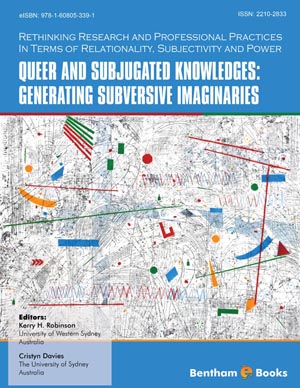Abstract
This chapter explores a set of conceptual relations between ‘the grid,’ understood as an organizing structure for subjectivity and urban spaces, and subcultural identities and practices. In this context of metaphoric grid structures, the discussion is concerned with addressing the legibility and recognizability of instances of time or space that operate within subcultural practice to destabilize cultural and sexual norms. The discussion first reflects on the location and temporality of an example of street art in New York in terms of its skewed spatial relation to that city’s grid map, questioning how the work’s unsettling of conventional ideas of cultural production can speak to the spatial and temporal organization of place, property and propriety. In the second section, a reading of John Cameron Mitchell’s film Shortbus provides a means to imagining a time and space of queer possibility within the grid failure of short-circuit and black-out. Using the film’s literal rendering of these metaphors, the chapter argues that Mitchell’s depiction of a salon of queer subcultural convergence evades heteronormative narratives of time and space and instead highlights the priority and the productivity of the immeasurable momentary. Finally, building from the impetus of this concept of productive failure, the potential of queer theory to release academic subjects from the strictures imposed by narratives of professional progress and institutional affiliation is considered, ultimately questioning queer theory’s complicity in establishing further normative grids that may also stymie the legibility and recognizability of those operating at the margins of academia. Melissa Jane Hardie provides a response to this chapter.
Keywords: Grid, grid failure, Shortbus, time, space, subcultural, queer, place, John Cameron Mitchell, short-circuit, heteronormative.













